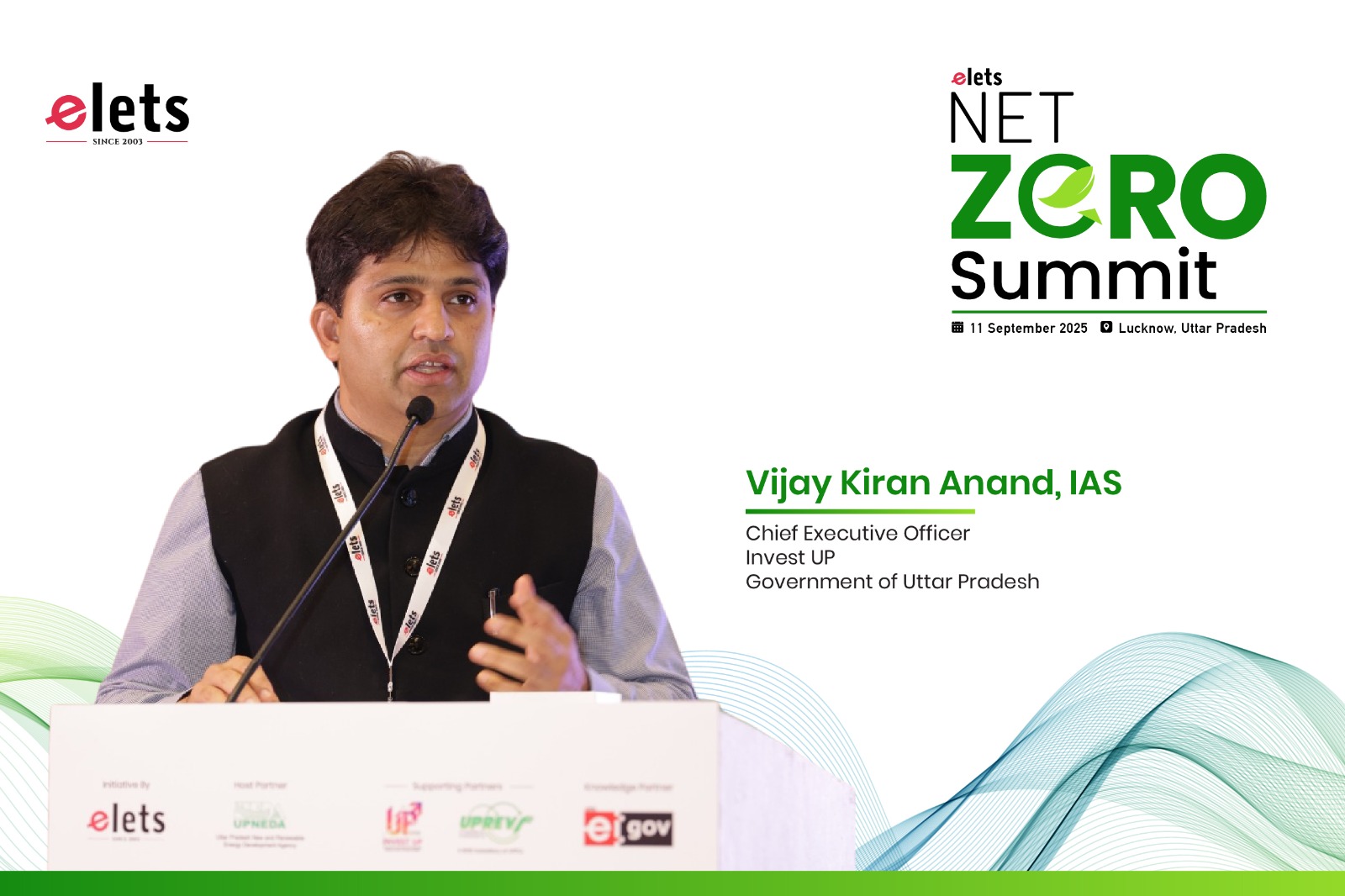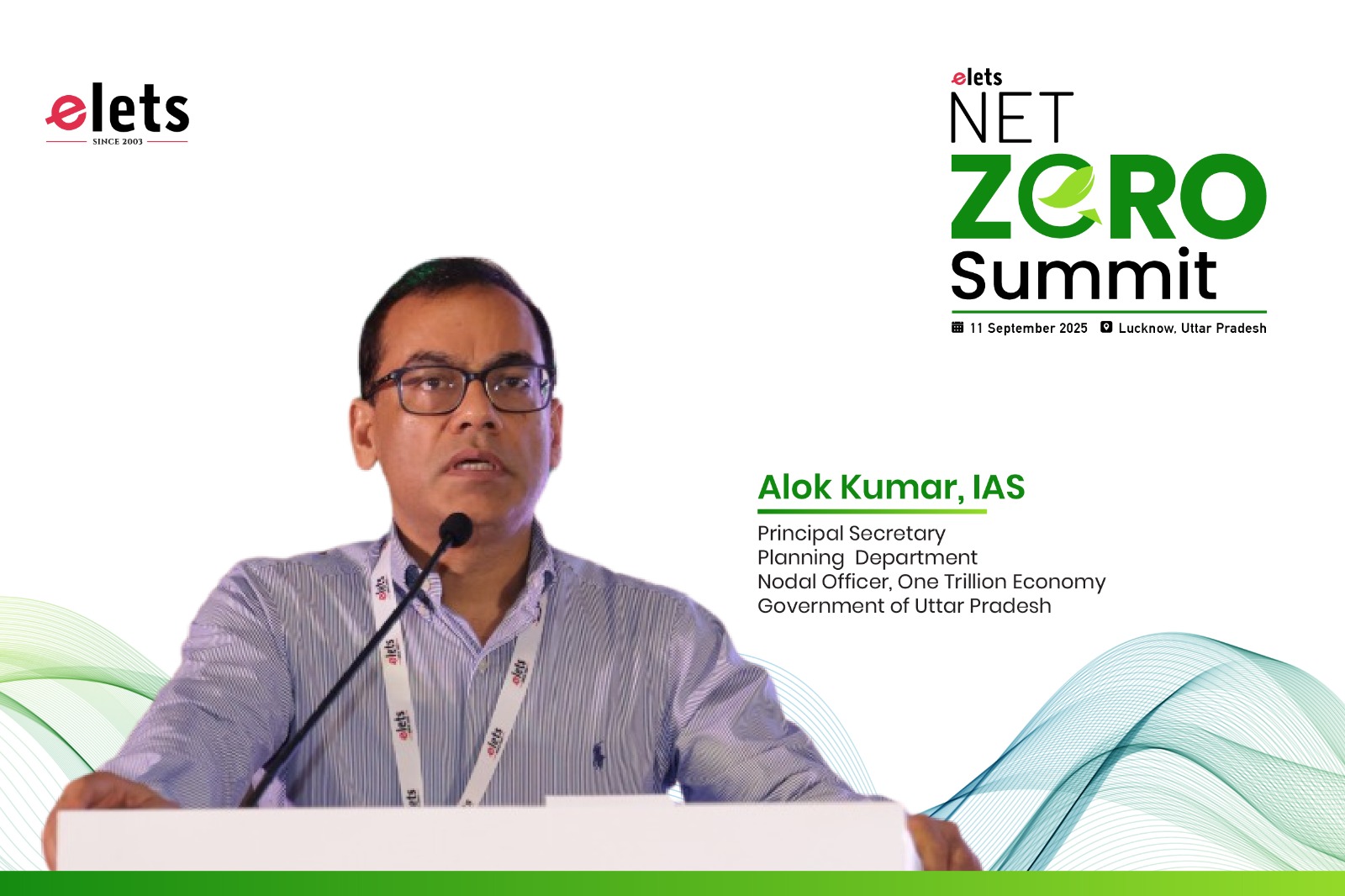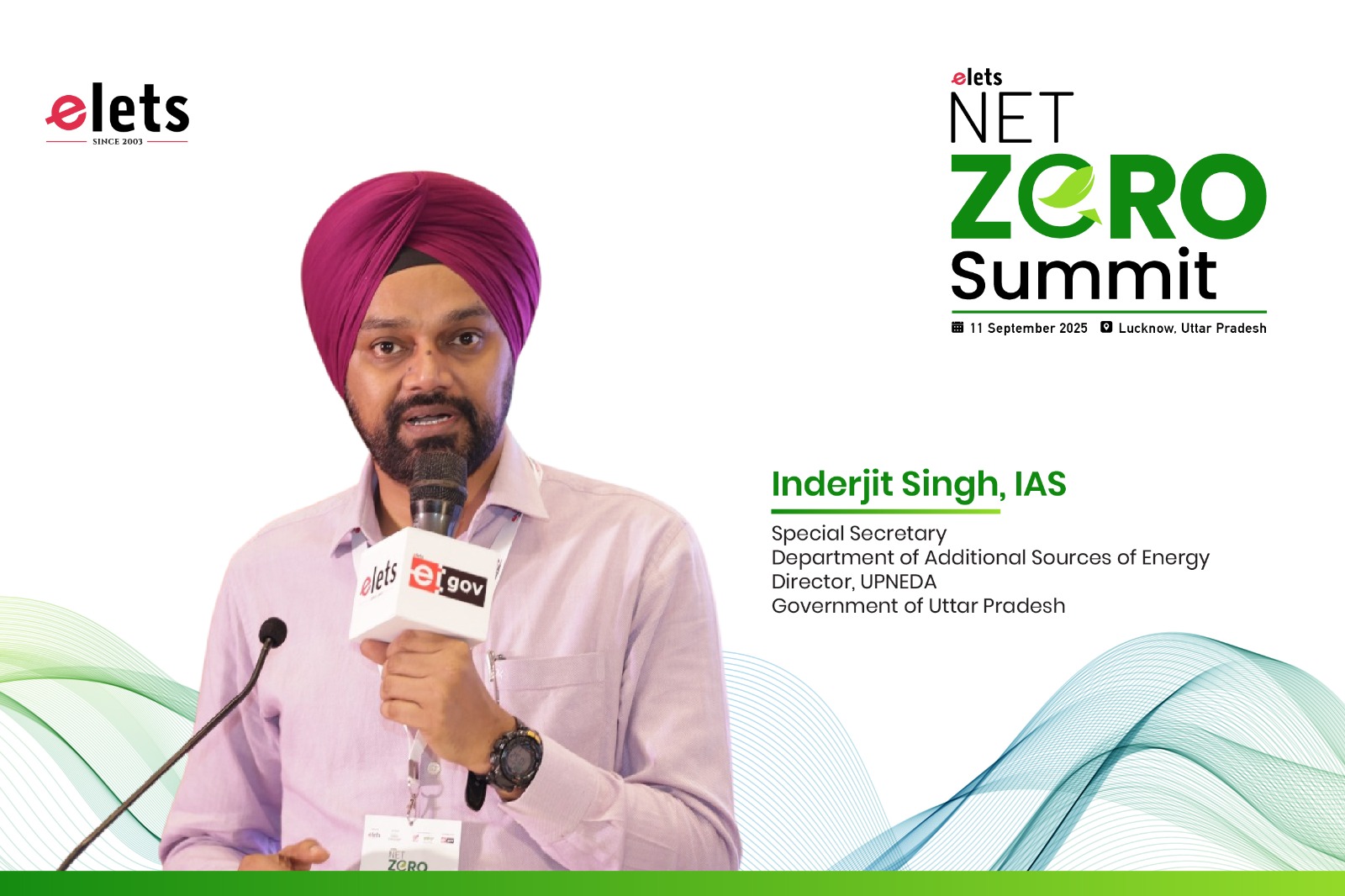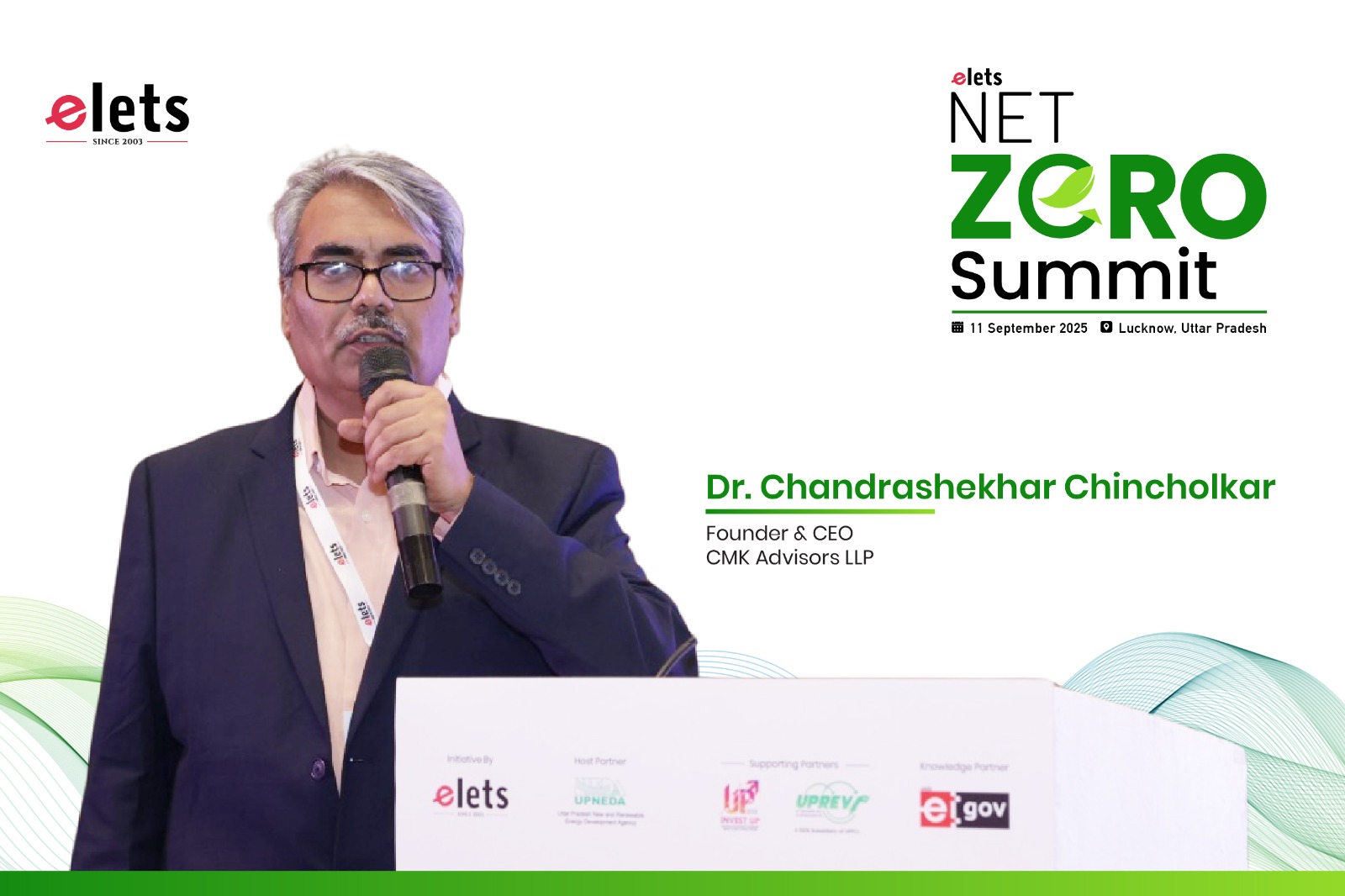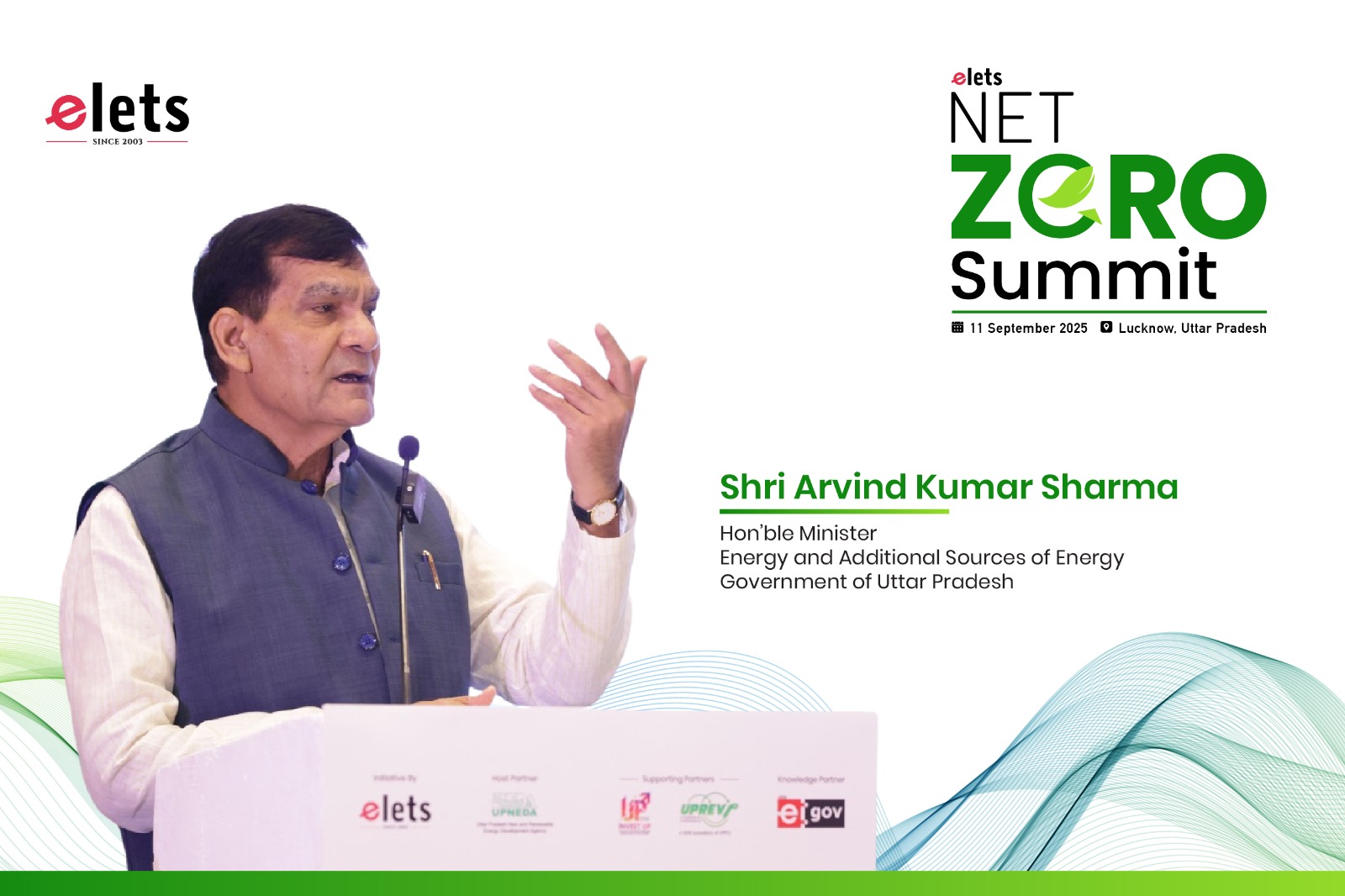
India aims to produce 5 million metric tons of green hydrogen by 2030, decarbonizing key sectors like steel, cement, and transport. The National Green Hydrogen Mission, state-led projects, and global partnerships drive innovation, but scaling production, efficiency, and infrastructure remain challenges. Governments are introducing policies and incentives to boost growth. Dr. Ranjith Krishna Pai, Scientist F, Senior Director – CEST Division, Department of Science & Technology, Government of India, discusses India’s hydrogen-powered future with Nijhum Rudra of Elets News Network (ENN).
What role do you believe green hydrogen will play in India’s transition to renewable energy, and what specific benefits does it offer for the country’s longterm energy strategy?
Green hydrogen is pivotal to India’s transition to a sustainable, energy-independent future, aligning with its goals of energy independence by 2047 and net-zero emissions by 2070. It will be crucial in decarbonising energy-intensive industries like steel, cement, and heavy transport, where electrification is impractical. Leveraging abundant solar and wind resources, India can scale up green hydrogen production, reducing fossil fuel dependency and strengthening energy security.
Additionally, green hydrogen addresses renewable energy intermittency by storing surplus power for peak demand periods. The National Green Hydrogen Mission has the potential to create a multi-billion-dollar market, foster innovation, and drive industrial growth, generating jobs and positioning India as a global clean energy leader. While challenges exist in scaling production and infrastructure, continued policy support and technological advancements will be key to making green hydrogen a cornerstone of India’s long-term energy strategy.
How is India advancing the development of green hydrogen technology, and what are some of the most promising innovations or breakthroughs in this field?
India is making significant strides in green hydrogen technology, backed by strong government initiatives and strategic investments. The National Green Hydrogen Mission, launched in 2023 with a ₹19,744 crore ($2.37 billion) budget, aims to produce 5 million metric tons of green hydrogen annually by 2030. Key focus areas include reducing production costs, supporting electrolyzer manufacturing, and establishing hydrogen hubs across industries.
A major initiative under this vision is the Hydrogen Valley Innovation Cluster (HVIC), spearheaded by the Department of Science and Technology (DST) and the Ministry of New and Renewable Energy (MNRE). These clusters will showcase the entire hydrogen value chain, fostering R&D and industry collaboration. They will also serve as testing grounds for new technologies, accelerating commercialization and mitigating risks.
Notable innovations include next-generation electrolyzers, such as solid oxide and anion exchange membrane (AEM) types, along with research into photocatalytic and photoelectrochemical hydrogen production. India is also advancing storage solutions, including liquid organic hydrogen carriers (LOHCs), metal hydrides, and underground storage for enhanced efficiency and safety.
Hydrogen fuel cells are gaining traction in commercial transport, with applications in buses, trucks, and trains. Additionally, green ammonia and hydrogen blending with natural gas are being explored to decarbonize industry and energy production. With a robust policy framework, declining electrolyzer costs, and a strong focus on R&D, India is poised to lead the global green hydrogen sector, facilitating a cleaner and more energy-secure future.
With the government setting ambitious goals for green hydrogen, what are the key technological and infrastructure challenges that still need to be addressed to scale up production and distribution?
Scaling up green hydrogen production and distribution requires overcoming several technological and infrastructural challenges. A major hurdle is the high production cost compared to conventional methods, necessitating advancements in electrolysis technology and reductions in renewable energy costs to achieve market competitiveness. Meeting ambitious government targets will also require addressing significant technical and logistical barriers.
- Electrolyzer Efficiency and Cost Reduction: Green hydrogen production primarily relies on electrolysis, which splits water into hydrogen using renewable electricity. The cost and efficiency of electrolyzers remain major challenges. Developing advanced, cost-effective electrolyzers with durable, high-performance catalysts and membrane materials is essential to making green hydrogen competitive with conventional methods. Lowering production costs is crucial for achieving market parity and scaling up production.
- Integration of Renewable Energy: Green hydrogen production depends on intermittent renewable sources like wind and solar power. Efficient integration of these energy sources into hydrogen production systems is necessary to maintain a stable and continuous hydrogen supply. This includes developing energy storage solutions, enhancing grid stability, and employing demand-side management techniques to balance energy availability with production needs.
- Storage and Distribution Infrastructure: Hydrogen presents unique challenges due to its low energy density. Safe, efficient, and cost-effective storage and transportation technologies must be developed. Compression, liquefaction, and alternative storage methods—such as ammonia or solid-state solutions—will be crucial for overcoming storage challenges. Building an extensive distribution network, including the potential adaptation of existing natural gas pipelines, is also vital to ensuring reliable and widespread hydrogen delivery.
- Supply Chain and Raw Materials: The materials required for green hydrogen production, such as catalysts, renewable energy components, and electrolyzer materials, are currently limited and expensive. Securing these raw materials and addressing potential supply chain bottlenecks will be key to ensuring uninterrupted production.
- Regulatory and Market Frameworks: A clear, harmonized regulatory framework is essential to fostering investment and ensuring safety across hydrogen production, storage, and distribution. Carbon pricing, subsidies for green hydrogen production, and global certification standards will help create a robust market and accelerate innovation.
- Public Acceptance and Demand Creation: Expanding the green hydrogen market across sectors such as transportation, industry, and power generation requires targeted policy initiatives to stimulate demand. Public acceptance, driven by education and clear safety protocols, will also play a crucial role in promoting widespread adoption.
Overcoming these multifaceted challenges will require innovation, investment, and collaboration among governments, industry players, and research institutions. A concerted effort to address these technological and infrastructure hurdles will unlock green hydrogen’s full potential as a sustainable and scalable energy solution.
Also Read :- India’s renewable energy surge policy innovation and strategic investments to achieve 500 gw by 2030
India’s green hydrogen market is still in its early stages. How are Indian companies collaborating with global partners to boost technology development and ensure cost-effective production?
Indian companies are forging strategic global partnerships to accelerate green hydrogen technology and reduce production costs. Reliance New Energy Limited (RNEL) has teamed up with Norway’s Nel ASA and Denmark’s Stiesdal A/S to produce HydroGen Electrolyzers in India, with a gigafactory in Gujarat set to be operational by 2026, enhancing domestic manufacturing and reducing import reliance.
GreenH Electrolysis, a joint venture with Spain’s H2B2 Electrolysis Technologies, is producing PEM electrolyzers in Haryana. Adani Group has partnered with Australia’s Cavendish Renewable Technology (CRT) for electrolyzer development, while Adani Total Gas Ltd (ATGL), in collaboration with TotalEnergies, is leading hydrogen-natural gas blending in Ahmedabad, Gujarat.
With over 200 GW of installed renewable energy capacity and significant biomass resources, India is well-positioned for low-cost hydrogen production. The Department of Science and Technology (DST) and the Ministry of New and Renewable Energy (MNRE) have launched the Hydrogen Valley Innovation Cluster to encourage public-private partnerships and strengthen both national and global hydrogen collaborations.
Be a part of Elets Collaborative Initiatives. Join Us for Upcoming Events and explore business opportunities. Like us on Facebook , connect with us on LinkedIn and follow us on Twitter, Instagram.
"Exciting news! Elets technomedia is now on WhatsApp Channels Subscribe today by clicking the link and stay updated with the latest insights!" Click here!




